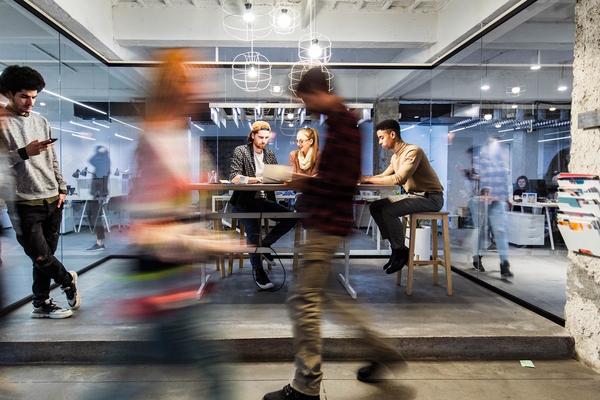Faster. Higher. Stronger: Olympic-level surveillance

France is gearing up for the 2024 Summer Olympics by implementing hundreds of surveillance cameras. Vishwa Narayan at Quantum explains how the footage they generate will be analysed by AI to keep everyone safe
This summer sees the long-awaited arrival of the Paris Summer Olympics, when millions of people will descend on the City of Light to enjoy the world’s best athletes in competition. However, in the current climate of heightened global tensions, the levels of video surveillance across 41 venues and surrounding areas are expected to be unprecedented – and controversial.
Privacy advocates are worried about what data will be gathered, how it will be used, and how deeply AI will be embedded.
In response, the French government has sought to alleviate these concerns by detailing what will be collected and how it will be processed. It insists that facial recognition is not in play; rather, the AI-enabled algorithms analyse real-time images to detect pre-defined unusual behaviour or objects. This encompasses unfamiliar crowd movements and density, abandoned bags, weapons, and fire, as well as any breach of traffic rules. Suspicious activity triggers an alert, which is then inspected by humans who make a final decision on which action to take.
Setting performance and resilience records
All this unstructured video data, generated by thousands of cameras, will be stored and analysed in real-time; however, it must be optimally resilient to ensure that, in the event of application or hardware failure, continuity is maintained. Any missing footage would have massive security implications.
Vital instances of suspicious behaviour could be lost, delaying attempts to identify and eradicate threats and attacks or prevent the escalation of hazardous situations. Without video evidence to recreate events, recognise culprits, and support witness descriptions, the rapid investigation and resolution of events is threatened. That means an increased risk of false incrimination against innocent spectators, not to mention public unease around reliability and transparency.
Getting over the hurdle of unstructured data
Securely managing this huge amount of unstructured data demands the most up-to-date video surveillance recording and storage technology, with the ability to scale to support thousands of streams at maximum availability. It must also run multiple surveillance applications, such as crowd intelligence analytics, simultaneously.
Unfortunately, traditional network video recorders (NVRs) do not allow wide-scale video surveillance because every application – such as access control, analytics, and video management – requires its own dedicated server. Moreover, legacy NVR application servers and storage systems are not intended for round-the-clock video surveillance.
However, what was once a major challenge is now viable with the latest type of surveillance solution: replacing standard racks of NVR servers with one single software-based solution that combines compute and storage for video recording and analytics. This new approach allows over ten thousand cameras to be hosted on one system. It also enables strengthened data protection and automatic failover across an entire cluster, eliminating data loss and maximising uptime.
That’s important because the Olympics cannot risk stopping recording or losing access to historical data. While there might be failover in some older systems to enable continuous recording, it will still lose access to historical video if the NVR fails. There simply isn’t enough time at the Olympics to revive a failed system retrospectively to access old video. Continuous access to recorded video is only made possible by a software-defined distributed storage architecture.
This approach also boasts the ability to support multiple physical security applications on a single, unified infrastructure, with compute and GPUs for managing AI workloads, as well as flash or disk storage. This is a system designed for mission-critical, large-scale video surveillance that is simple to manage, cost-effective, and hugely scalable.
Combining privacy and security
Familiar concerns have been raised that such extensive surveillance could become the norm, and that facial recognition and enhanced AI-enabled analysis could be integrated at a later stage. Beyond sporting events, critics warn that individuals at rallies and gatherings could be identified and tracked, compromising their right to privacy and free speech.
However, in the context of responsible use, these new solutions will supply critical safety and security data, only highlighting and analysing footage when an incident may have happened. They can also integrate intelligence to improve the spectator experience at major events by funnelling people to avoid queues for exits, concession stands, tickets, and other facilities.
We’ll soon find out whether there are any negative consequences of the enhanced surveillance at the Paris Games or whether spectators are content to trade off a degree of privacy in order to protect the crowd as a whole.
Ultimately, security and privacy are intertwined, and those in charge must have public approval to find the right balance.
Vishwa Narayan is Director of Product Management at Quantum
Main image courtesy of iStockPhoto.com and Eoneren

Business Reporter Team
Most Viewed
23-29 Hendon Lane, London, N3 1RT
23-29 Hendon Lane, London, N3 1RT
020 8349 4363
© 2024, Lyonsdown Limited. Business Reporter® is a registered trademark of Lyonsdown Ltd. VAT registration number: 830519543





